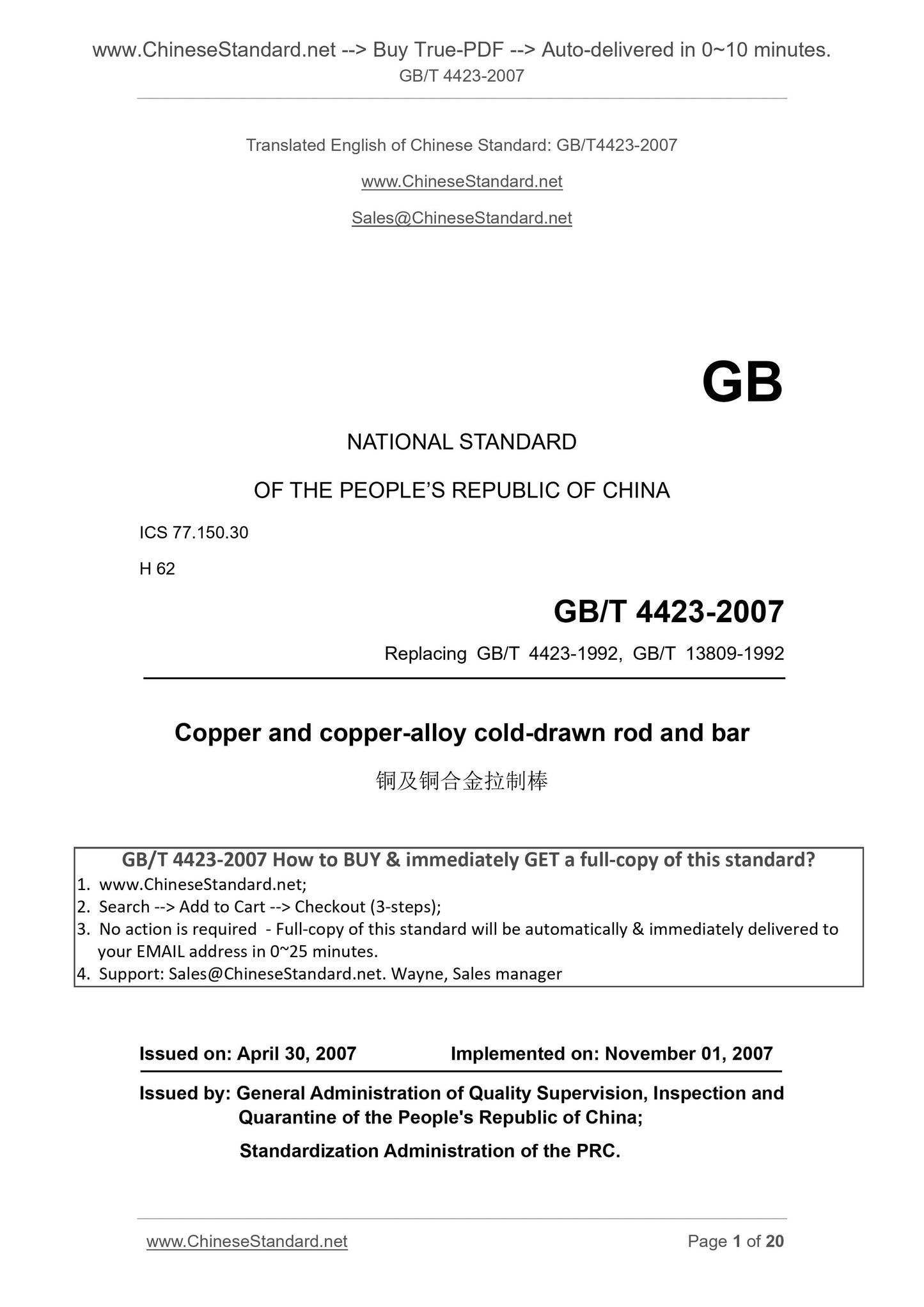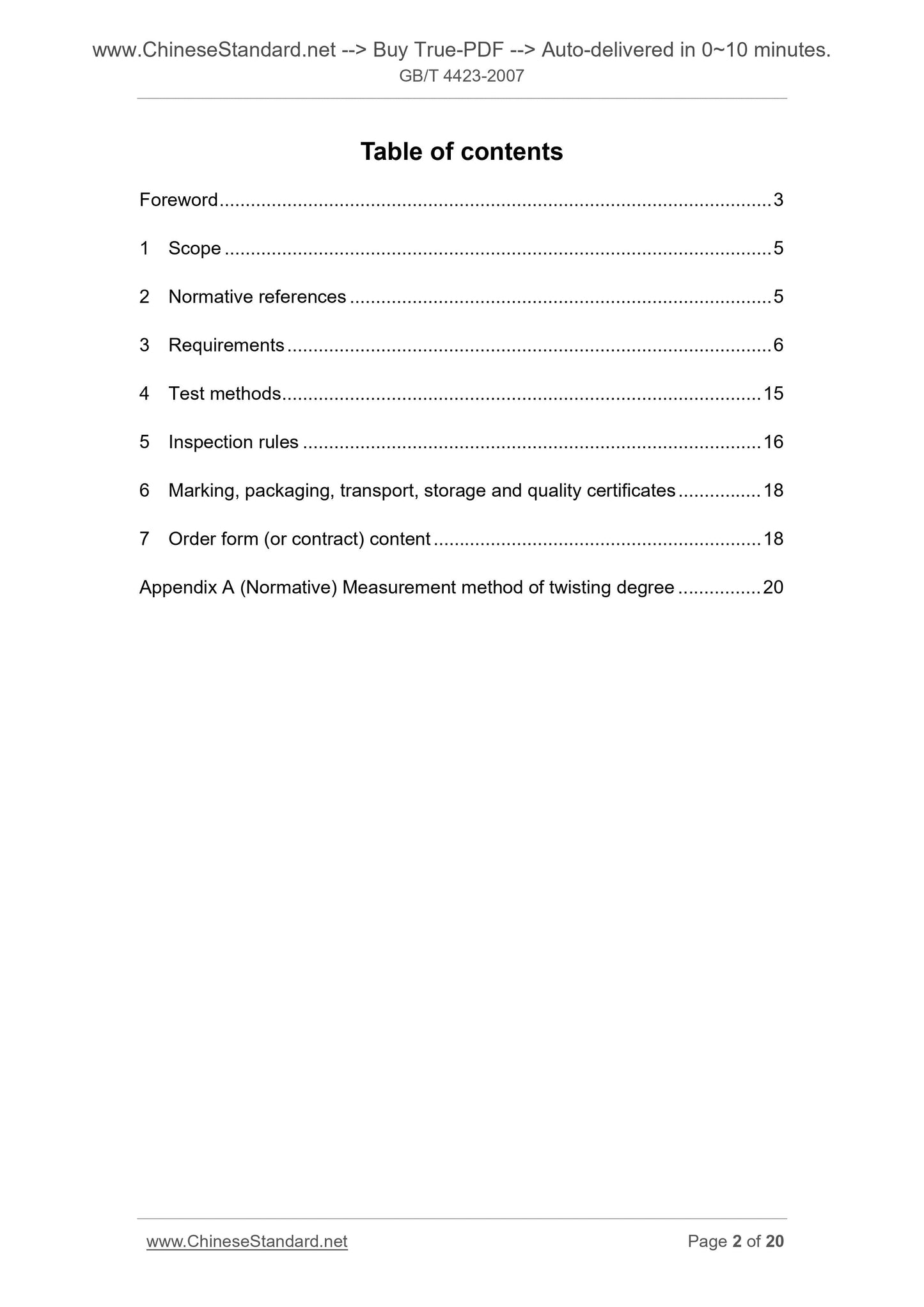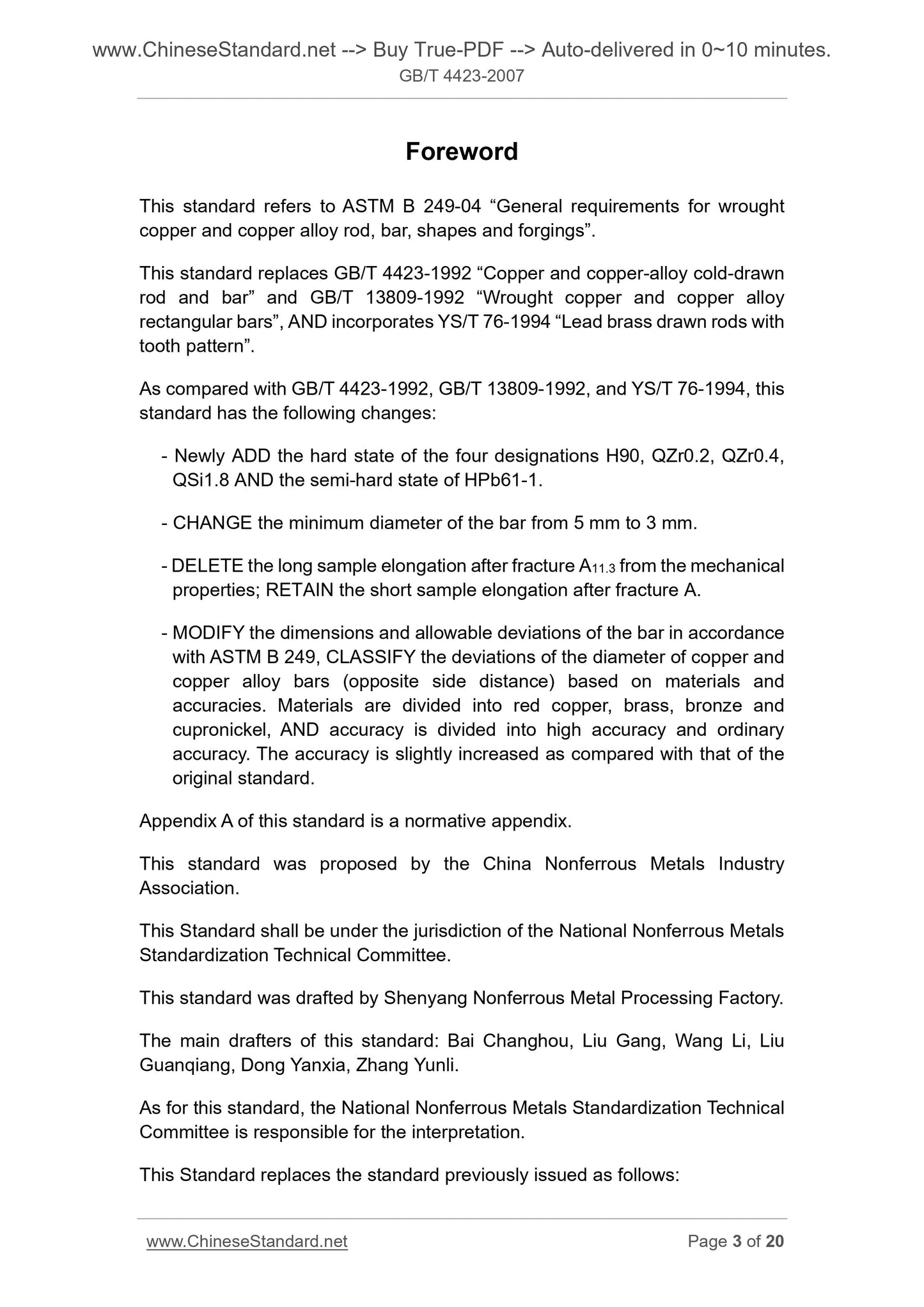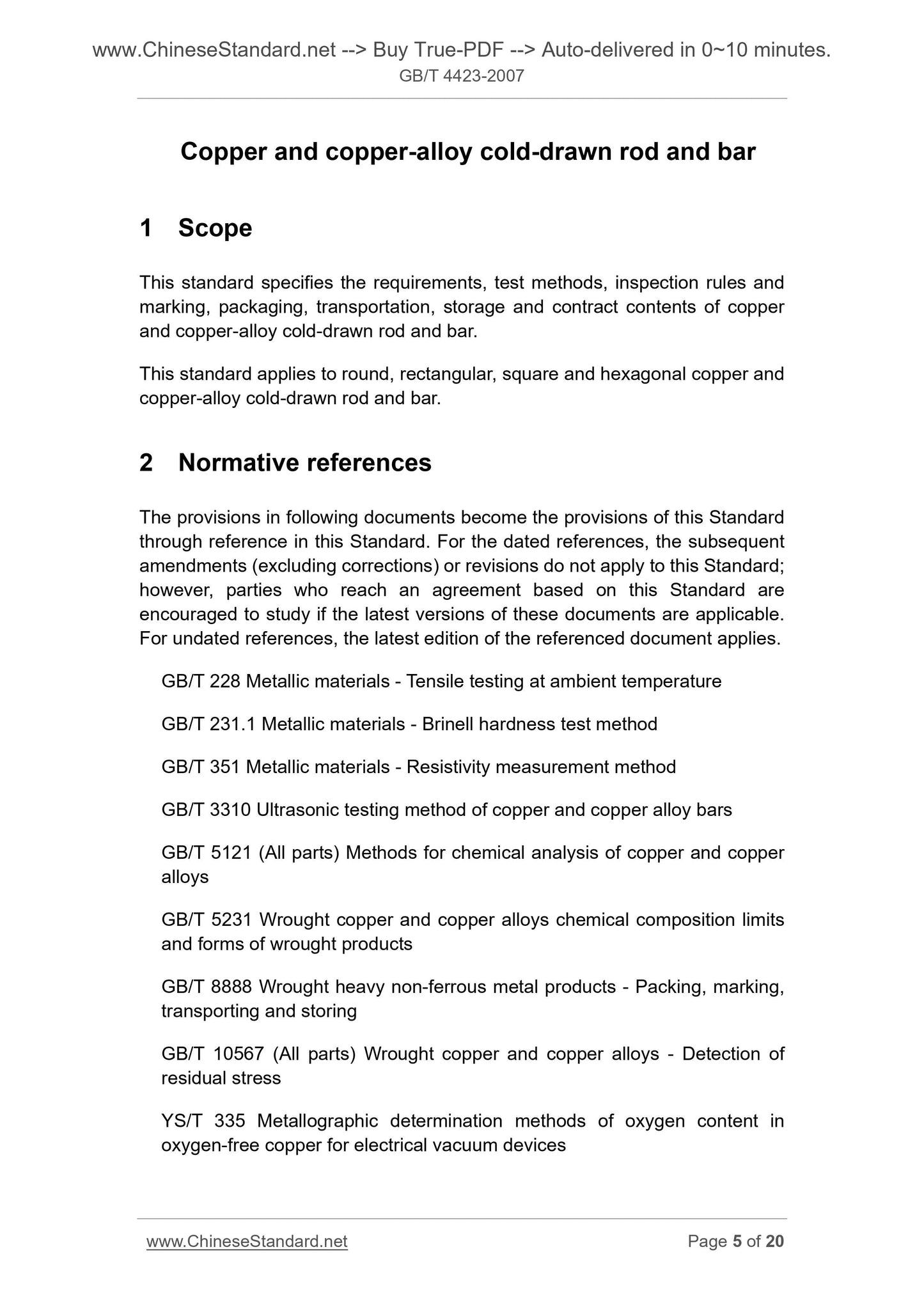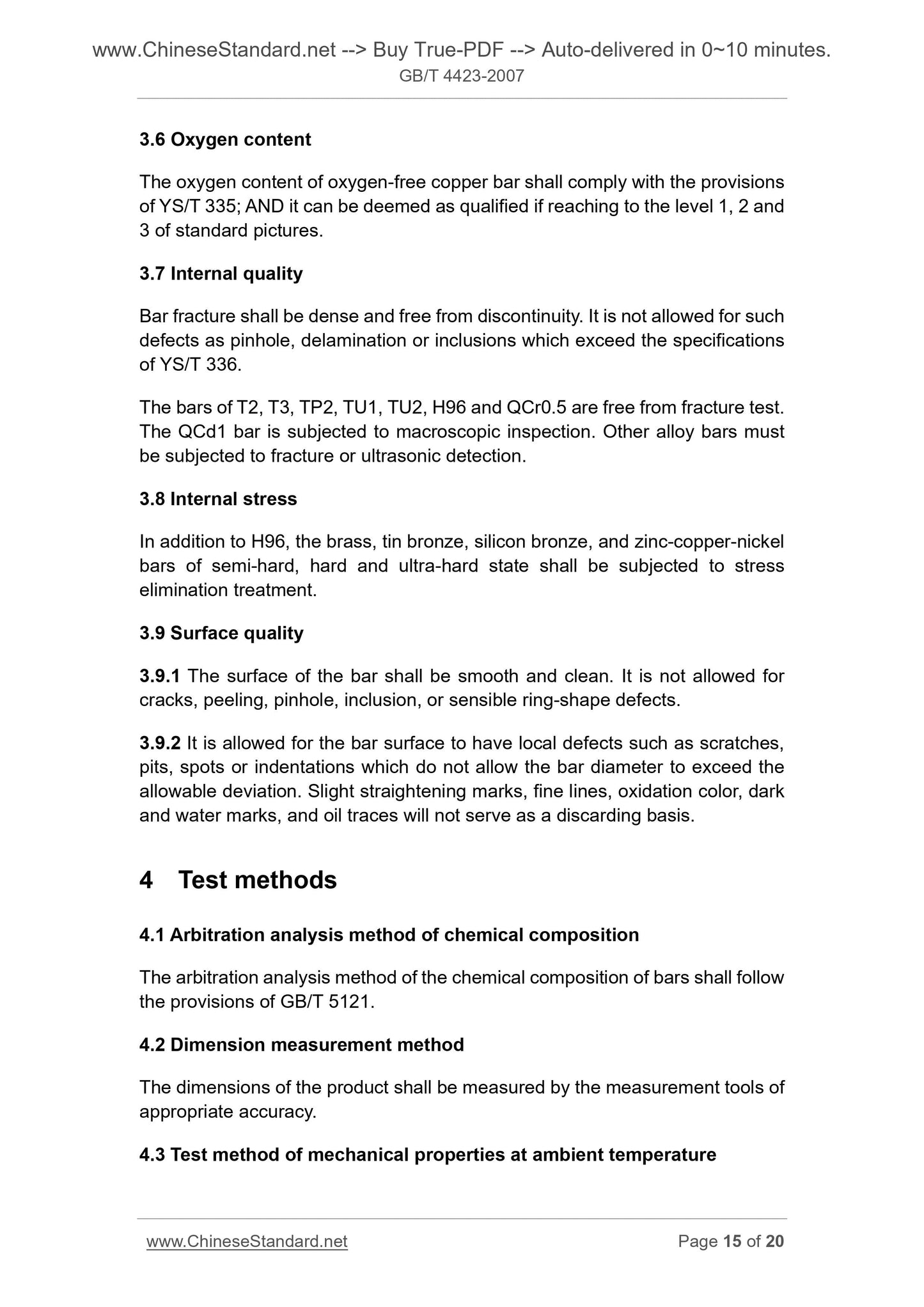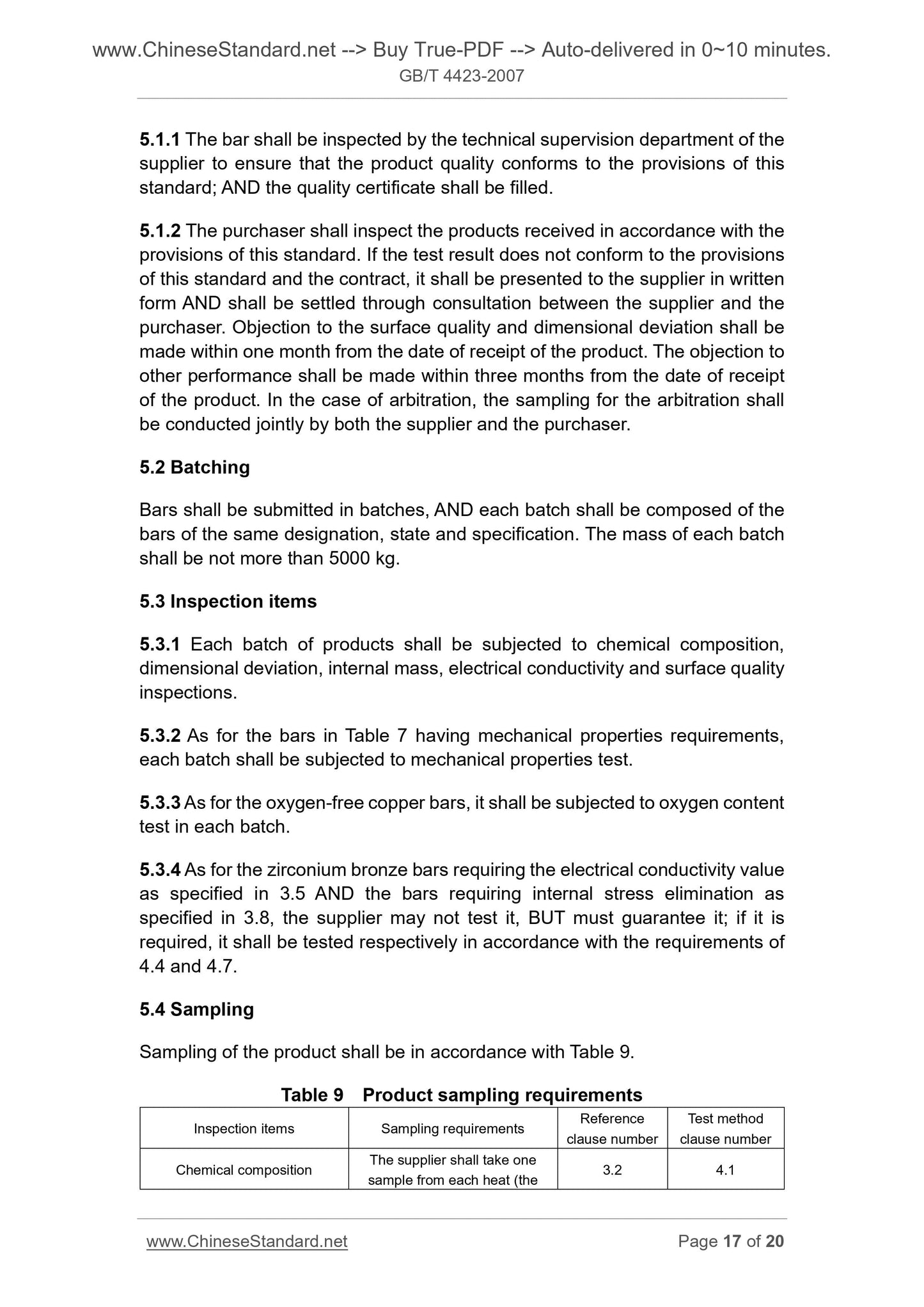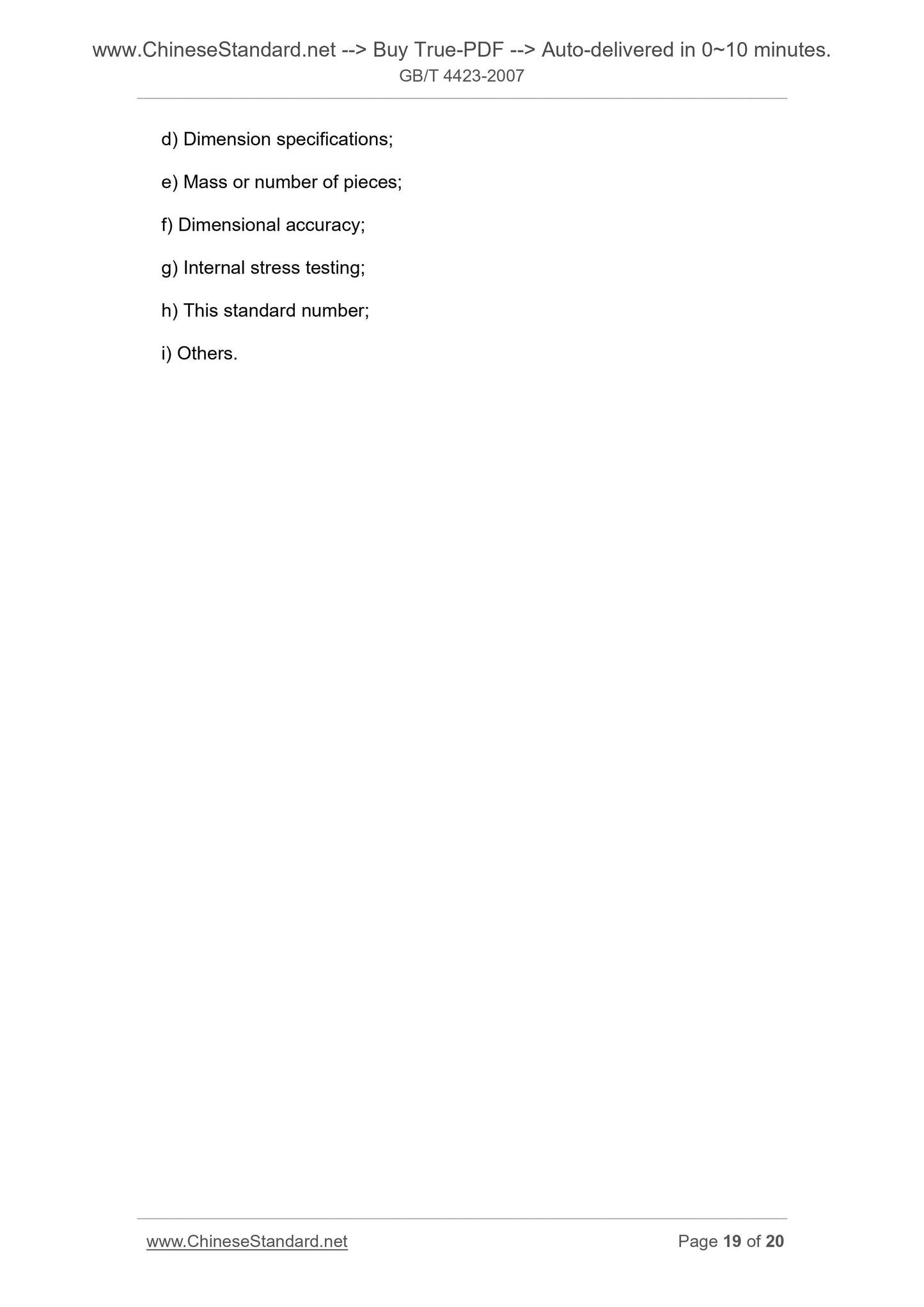1
/
of
7
PayPal, credit cards. Download editable-PDF and invoice in 1 second!
GB/T 4423-2007 English PDF (GB/T4423-2007)
GB/T 4423-2007 English PDF (GB/T4423-2007)
Regular price
$75.00
Regular price
Sale price
$75.00
Unit price
/
per
Shipping calculated at checkout.
Couldn't load pickup availability
GB/T 4423-2007: Copper and copper-alloy cold-drawn rod and bar
Delivery: 9 seconds. Download (and Email) true-PDF + Invoice.Get Quotation: Click GB/T 4423-2007 (Self-service in 1-minute)
Newer / historical versions: GB/T 4423-2007
Preview True-PDF
Scope
This standard specifies the requirements, test methods, inspection rules andmarking, packaging, transportation, storage and contract contents of copper
and copper-alloy cold-drawn rod and bar.
This standard applies to round, rectangular, square and hexagonal copper and
copper-alloy cold-drawn rod and bar.
Basic Data
| Standard ID | GB/T 4423-2007 (GB/T4423-2007) |
| Description (Translated English) | Copper and copper-alloy cold-drawn rod and bar |
| Sector / Industry | National Standard (Recommended) |
| Classification of Chinese Standard | H62 |
| Classification of International Standard | 77.150.30 |
| Word Count Estimation | 13,192 |
| Date of Issue | 2007-04-30 |
| Date of Implementation | 2007-11-01 |
| Older Standard (superseded by this standard) | GB/T 4423-1992; GB/T 13809-1992 |
| Quoted Standard | GB/T 228; GB/T 231.1; GB/T 351; GB/T 3310; GB/T 5121; GB/T 5231; GB/T 8888; GB/T 10567; YS/T 335; YS/T 336 |
| Regulation (derived from) | China National Standard Announcement 2007 No.5 (Total No.105) ("China Standardization") |
| Issuing agency(ies) | General Administration of Quality Supervision, Inspection and Quarantine of the People's Republic of China, Standardization Administration of the People's Republic of China |
| Summary | This standard specifies the requirements for drawing stick copper and copper alloys, test methods, inspection rules and signs, packaging, transport, storage and contract content. This standard applies to round, rectangular, square and hexagonal drawn copper and copper alloy bars. |
Share
